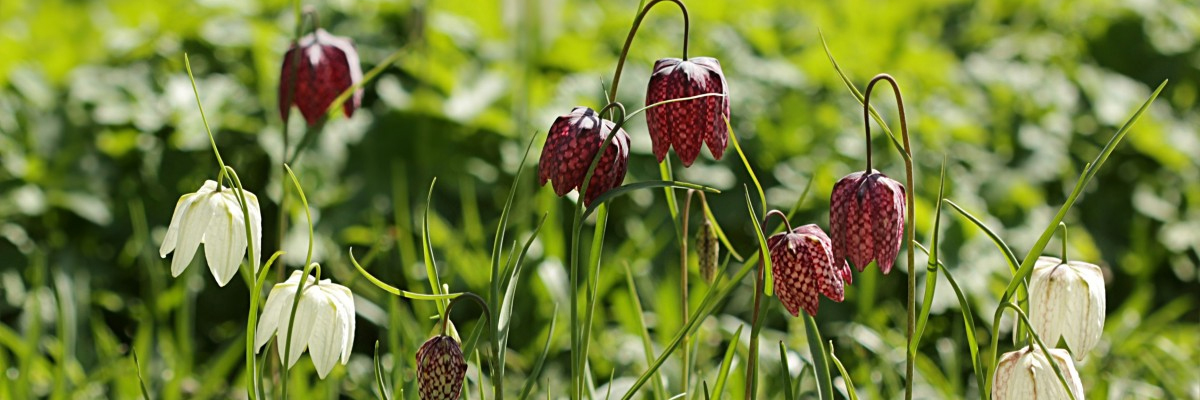
Add Color Next Spring With Flowering Bulbs
By Kerry Ann Mendez
Gardeners always seem to be on the quest for more color in the garden, especially during the "shoulder seasons" of spring and fall. Like chocolate, we can't get enough. One of the easiest ways to increase the bloom count is with flowering bulbs. Requiring little planting space, bulbs can be tucked in between existing plants, as well as nooks and crannies too small for other contenders.
Bulb Planting Tips
As a rule, a bulb's planting depth is three times its height. Plant bulbs with the pointy side up. If you are not sure of the pointy side, don't fret. A neat attribute of most bulbs is the ability for an emerging stem to seek the soil's surface despite its orientation in the ground. You can always plant bulbs sideways for added insurance. Most bulbs require good drainage so they don't rot. Some are more sensitive to moisture than others.
I recommend planting in multiples; the more the better. And please, not in straight lines. Create sweeps; 5's, 7's and 9's work nicely. Plant bulbs in "soil channels" between existing perennials or shrubs. This way, as the bulbs start to die back, the neighboring foliage hides their "dirty laundry". Flowering bulbs also look great tucked among groundcovers.
Choosing Spring Flowering Bulbs
There are oodles of spring blooming bulbs to choose from but tulips and daffodils are usually the go-to choices - however, let's think outside the "bulb crate", shall we?
How about Quamash (Camassia)? Quamash has airy white, lavender, blue or violet flowers that reach from 24" to 30". They thrive in sun to part sun and prefer a moisture retentive soil. I love tucking them among Astilbes and Hosta for early color. Quamash is a native that is rarely bothered by deer and is hardy to Zone 4.
Checkered Lily (Fritillaria meleagris) is a dainty flower that tops out at 8" in part sun to shade. You can choose between maroon and white "checkered" flowers or pure white. Checkered Lily has slender, blue-green foliage. They naturalize at a polite pace and tolerate moist soil, unlike many bulbs. Checkered Lilies are detested by munching critters, including deer. They are hardy to Zone 3.
Spanish Bluebells (Hyacinthoides hispanica) display lovely blue-violet, pink or white hanging, bell-shaped flowers that grow to 12" to 15". They enjoy sun to part shade, naturalize well, are long-lived, deer-proof and are hardy to Zone 4.
Other fantastic spring bulbs that thrive in my garden include Trout Lily (Erythronium), Winter Aconite (Eranthus), Giant Snowflake (Leucojum), Striped Squill (Pushkiia), and of course Alliums.
Protecting Your Bulbs
Finally, if bulb-chomping critters are a problem you can:
- Put Soil Perfector from Espoma, chicken grit or crushed shells in planting holes around bulbs. The sharp fragments feel nasty on tender noses.
- Use wire cages to protect bulbs, although I find these too much of a drag to fiddle with. Plus I hit them when digging in new plants or dividing perennials.
- Drench bulbs in an animal repellent that deters critters through taste. Allow bulbs to dry and then plant.
- Select poisonous bulbs such as Daffodils, Fritillaria, and Colchicums. Although this sounds cruel, rest assured that the "muncher" will take one nibble, realize it's bad for tummies and move on, unharmed.
So why not plant a mix of bulbs this fall to ramp up your garden's beauty index next spring? Your gardens will be the envy of the neighborhood.